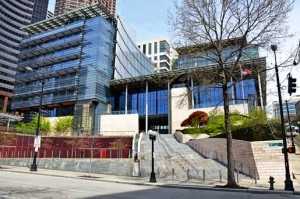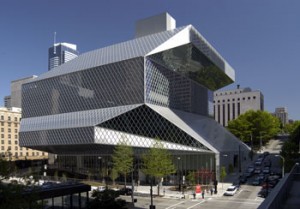The philosopher Isaiah Berlin wrote a famous essay based on a saying attributed to the ancient Greek poet, Archilochus: “The fox knows many things, but the hedgehog knows one big thing.” Berlin was referring to writers and thinkers—he characterized Plato, Nietzsche, and Proust as hedgehogs, Shakespeare, Goethe, and Pushkin as foxes. I was visiting Seattle this week, and two buildings almost side by side, the Seattle Public Library (2004) and the City Hall (2005), reminded me that the metaphor holds true for architects as well. Rem Koolhaas and Joshua Prince-Ramus, the architects of the library, are definitely hedgehogs; they have one big idea that they flog for all it’s worth. Glass, glass, glass. No details, no facades, no relation to the surroundings—the crystalline shape is awkwardly parachuted into steeply sloping site. Peter Bohlin, on the other hand, is a (sly) fox. Instead of a Big Idea, the city hall addresses its function, its site, its views, its materials, and its construction in many small—and not so small—ways. We have become so used to signature buildings that it is almost a surprise to encounter a public building that is not trying to be an icon. Unlike the library, the city hall is neither puzzling nor confusing. Here are the offices, here’s the council chamber, here’s the entrance, here’s a place to sit and have lunch, and here’s how the whole thing is put together. The library is a prickly presence in the city; the city hall flits lightly through its urban surroundings.



